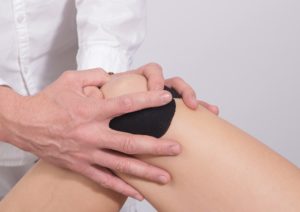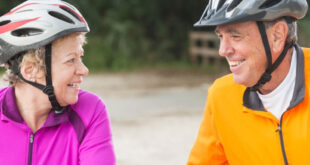 Do you stay active by playing sports or through high-impact exercises like jogging? This type of intense, physical activity is great for helping you manage a healthy weight and stave off many lifestyle diseases. Unfortunately, sometimes knee injuries (or even simply knee pain that seems to pop up despite no acute injury) can completely sideline your favourite athletic hobbies in a flash.
Do you stay active by playing sports or through high-impact exercises like jogging? This type of intense, physical activity is great for helping you manage a healthy weight and stave off many lifestyle diseases. Unfortunately, sometimes knee injuries (or even simply knee pain that seems to pop up despite no acute injury) can completely sideline your favourite athletic hobbies in a flash.
Don’t be taken off guard! Protect your knees and safeguard yourself against age-related joint degeneration and injury with this important guide:
Knee joint health 101
Joint health plays an critical role in both your activity levels and overall longevity as you age, and many different conditions can affect joint health. The knee joint specifically connects some of the largest bones in the body like the femur (thigh bone), tibia (shin bone), and patella (kneecap).
Common sources of knee pain include:
- Chondromalacia patellae (patellofemoral pain syndrome) – also known as “runner’s knee,” this very common chronic knee condition is characterized by pain in and around the kneecap. It results from cartilage degeneration that allows the femur and kneecap to grate against one another instead of moving smoothly.
- Medial ligament sprain – excessive stretching or tearing of the MCL (medial cruciate ligament) in the knee is most often caused by a sudden impact or harsh twisting of the knee.
- Arthritis – some forms of arthritic joint inflammation affect the knees more than other joints including osteoarthritis and rheumatoid arthritis. Joint stiffness, pain, and tenderness often occur during flare-ups.
- Meniscus tear – another source of inner knee pain, a tear to the rubbery shock-absorbing pad of tissue on the inside or outside of the knee can result in knee weakness and instability, pain, and inflammation.
- Bursitis – small fluid-filled sacs called bursa can be found in joints all around the body; they facilitate gliding movements in the joints and help to reduce friction between tissues. When they become inflamed they can lead to increased joint stiffness, swelling, and discomfort.
- Conditions like tendinitis, an ACL tear, gout, and iliotibial band syndrome can also contribute to knee pain and stiffness. None of these are necessarily inevitable as you age, however, some risk factors do increase your chances of developing them.
The most common risk factor is overuse of the knees, whether it’s long-term repeated stress from playing high-impact sports or simply wear and tear associated with a physically demanding career.
Additional risk factors include:
Being overweight or obese
Having flat feet
Wearing ill-fitting or worn out shoes
Using poor body mechanics when working out or playing sports
Having weak upper or lower leg muscles
Experiencing a previous knee injury like a fracture or ligament tear
Having a medical condition like arthritis that makes the knees more susceptible to damage
If knee pain has started affecting your ability to complete basic daily tasks and exercises, you should get a comprehensive evaluation from your doctor as soon as possible. Left untreated, knee injuries in older age can negatively impact your mobility and independence levels.
For minor fitness injuries like a knee strain or sprain, your doctor may just recommend the R.I.C.E. method of resting the affected leg, applying ice packs intermittently, compressing it with a bandage or compression sleeve, and elevating it to alleviate inflammation. More serious knee injuries, on the other hand, may require surgical intervention.
Preventing Knee Pain
When it comes to preventing the risk factors and common causes of knee pain, a handful of best practices go a long way. These include maintaining a healthy weight, practicing good body mechanics, wearing proper-fitting shoes, utilising orthotic aids like knee braces, and incorporating more low-impact exercises into your weekly workout regimen.
What exactly is a low-impact activity? Experts define it as any physically exerting activity that involves at least one foot staying on the ground at all times. Sports like jogging and rugby would be considered high-impact and therefore more risk-prone. Low-impact exercises still allow for an effective workout but lower your chances of getting injured and often offer older adults more variety and less joint strain. Great low-impact activities for healthy knees include:
Badminton
Stationary bike
Yoga
Pilates
Water aerobics
Elliptical machines
Dancing
Tai chi
The importance of stretching
Both prior to physical activity and after, stretching also plays a major role in supporting your joints. Stretching promotes good posture and helps to keep muscles and other connective tissues pliable and loose so they can better reinforce your joints and relieve unwanted pressure on them. When it comes to stretches that benefit your knee joints, experts recommend focusing on improving the flexibility and range of motion in the hamstrings, hips, calves, lower back, and ankles.









Join the Discussion
Type out your comment here:
You must be logged in to post a comment.